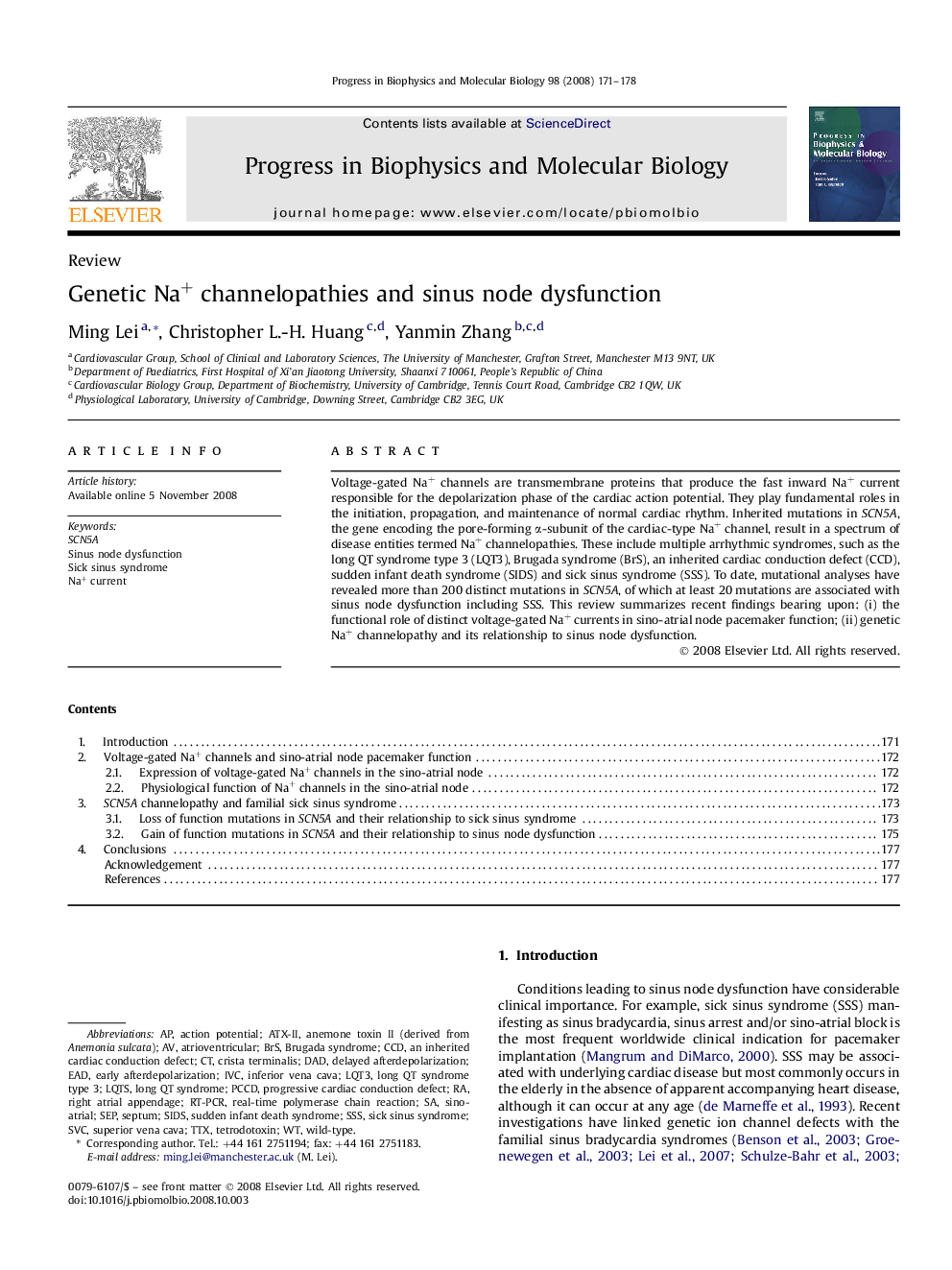| Article ID | Journal | Published Year | Pages | File Type |
|---|---|---|---|---|
| 8401695 | Progress in Biophysics and Molecular Biology | 2008 | 8 Pages |
Abstract
Voltage-gated Na+ channels are transmembrane proteins that produce the fast inward Na+ current responsible for the depolarization phase of the cardiac action potential. They play fundamental roles in the initiation, propagation, and maintenance of normal cardiac rhythm. Inherited mutations in SCN5A, the gene encoding the pore-forming α-subunit of the cardiac-type Na+ channel, result in a spectrum of disease entities termed Na+ channelopathies. These include multiple arrhythmic syndromes, such as the long QT syndrome type 3 (LQT3), Brugada syndrome (BrS), an inherited cardiac conduction defect (CCD), sudden infant death syndrome (SIDS) and sick sinus syndrome (SSS). To date, mutational analyses have revealed more than 200 distinct mutations in SCN5A, of which at least 20 mutations are associated with sinus node dysfunction including SSS. This review summarizes recent findings bearing upon: (i) the functional role of distinct voltage-gated Na+ currents in sino-atrial node pacemaker function; (ii) genetic Na+ channelopathy and its relationship to sinus node dysfunction.
Keywords
CCDsino-atrialPCCDATX-IIlong QT syndrome type 3LQT3EADIVCSEPLQTSSVCSIDSSSSSCN5ATTXRT-PCRBRSDADSinus node dysfunctionearly afterdepolarizationsuperior vena cavatetrodotoxincrista terminalisNa+ currentAtrioventricularright atrial appendageLong QT syndromeBrugada syndromeSick sinus syndromeSudden Infant Death SyndromeSeptumwild-typereal-time polymerase chain reactionInferior vena cavaaction potentialdelayed afterdepolarization
Related Topics
Life Sciences
Biochemistry, Genetics and Molecular Biology
Biophysics
Authors
Ming Lei, Christopher L.-H. Huang, Yanmin Zhang,
